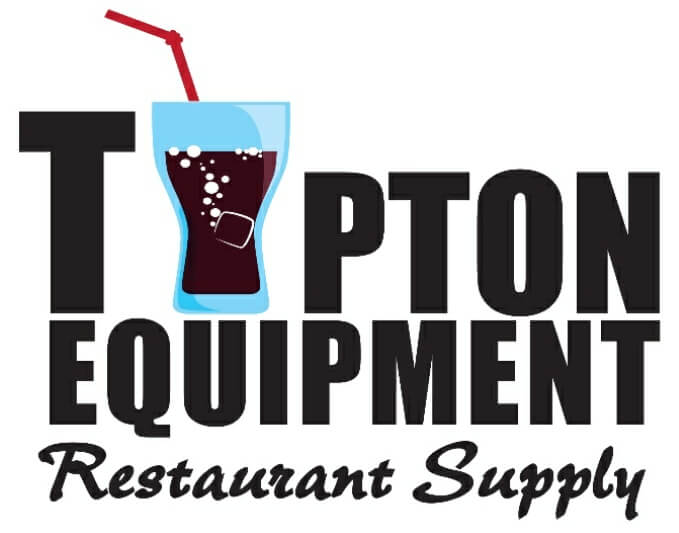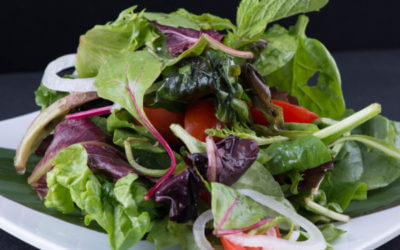Getting Your Commercial Kitchen Up and Running
August 29, 2019Getting your commercial kitchen up and running.
Serving Ware
If there’s nothing to serve the food on, there’s no restaurant. You’ll need tons of cutlery, plate ware, bowls, ramekins, cups, and glasses. Consider the number of tables you can fit in your restaurant and how many guests you hope to serve every night when factoring in how much to buy. Consider breakage – in the chaotic environment of commercial kitchens; it’s not uncommon to lose a plate or glass every few shifts.
Cooking Equipment for Your Commercial Kitchen
Consider what tools you’d need to execute your entire menu in one shift. Pots of all sizes, sauté pans, tasting spoons, mixing spoons, sheet pans, whisks, fish spatulas, ladles, bowls of all sizes, squeeze bottles, bench scrapers – the list goes on and varies widely depending on the type of food you want to make. You’ll also need more of each item than you expect.
Safety Equipment and Your Commercial Kitchen
Make sure your kitchen has proper safety equipment. A well-stocked first aid or medical emergency kit is crucial in a commercial kitchen that runs on fire and knives. Check your local fire department guidelines before purchasing fire, safety, or sanitation equipment, and avoid potential complications by always keeping your kitchen up to fire code standards.
Commercial Kitchen Freezers and Refrigerators
All commercial kitchens require a refrigeration system of some type. Without a fridge, you can’t keep the ingredients and prepared foods fresh. Freezers are also crucial for inventory management because it’s much more cost-effective to buy 300 steaks and freeze them than to buy ten steaks every day.
Industrial-grade refrigeration units are designed to meet the unique needs of the food industry. For example, they can cool large pots of sauce to a safe temperature in record time, so they’re a crucial purchase for any food handling operation. You’ll have to decide between reach-in units and walk-in units.
Make sure to seek professional help for installation and that you know how to properly maintain your unit, as they can be costly to repair.
Food Preparation Counters and Cutting Boards
Prep tables, counters, and cutting surfaces are essential to any commercial kitchen and come in various sizes. Choose preparation surfaces made of stainless steel, sturdy against corrosion, doesn’t absorb bacteria from food or meat and can withstand the harsh cleaning products used in commercial kitchens. On the line, you’ll want food prep counters that have small refrigerators underneath them for easy access to food prepped for each station.
As for cutting surfaces, choose either plastic or wooden cutting boards. Plastic boards are more comfortable to sanitize but can develop deep grooves that can hide bacteria. Wooden boards are generally tougher to clean than plastic ones but don’t develop grooves as quickly.
Ranges and Ventilation
If your restaurant plans on making anything but salad, you’ll need a kitchen range. The range is the powerhouse of the kitchen, so it’s essential to choose one that meets both your cooking needs. Like residential ranges, commercial units can be either gas or electric. If you’d prefer a visual, responsive cooking experience, go for a gas range.
Gas ranges make it easier to judge heat levels and change from high to low settings much faster than their electric counterparts. Alternatively, electric ranges have smooth, elegant, easy-to-clean designs and come in three sub-categories.
Standard electric ranges use coils to heat food, whereas you cook directly on the flat surface of smooth-top electric ranges. Electric induction ranges employ magnetic coils beneath a ceramic glass top to generate heat, but they require unique magnetic cookware to work.
Ovens
Most ranges come outfitted with an oven. If your operation centers around baked goods, it may be in your best interest to purchase a range with a convection oven setting. Unlike regular ovens, convection ovens have a fan and exhaust system that blow hot air around the food. They are a great appliance for roasting, toasting, making pies and cookies, or dehydrating.
Sinks
Sinks are vital to any kitchen because they provide running water as well as space for handwashing, cleaning produce, defrosting frozen meat under running water, or washing the occasional cooking utensil as needed.
Health and safety authorities typically require commercial kitchens to install a triple-sink wash station and a commercial dishwashing machine, as well as a dedicated handwashing sink.
Choosing the Right Sink for Your Restaurant
There are many, many pieces of kitchen equipment that are vital but often taken for granted. The kitchen sink is one of them. This workhorse of the back of the house handles a lot of jobs. Sinks give you running water as well as a place to wash either food or dishes....
Restaurant Supplies You Need to Add Delivery
Delivery services are becoming more and more popular, and that’s generally good news for restaurants. The ability to order online and receive food in the comfort of home drives up sales and that’s good for revenue. And when these sales don’t require additional tables,...
Should You Add a Salad Bar to Your Restaurant?
New Year’s is a prime time for resolutions – and one of the most common is to eat healthier and lose weight. In fact, for 2018 45% of Americans said they wanted to lose weight or get in shape for the new year. The new year might have you eyeing new options for your...
How to Overcome the Seasonal Rollercoaster
Are you tired of having huge swings in your business throughout the year? Do you wish you could just have consistent, easy-to-predict income? If so, it’s time for you to get off of the seasonal rollercoaster. You might think there’s nothing you can do to overcome the...
The Restaurant Supplies and Strategies You Need in 2019
Are you ready for the new year? If you’re like many restaurant owners, you’re thinking about how to get through the holiday rush – both in your restaurant and in your own life. However, you can’t overlook planning for the future. It’s vital to make sure you have the...
2018 Cooking Equipment Holiday Gift Guide
Do you know someone who loves to cook? Or are you looking for a new, special piece of cooking equipment for yourself? Whether you’re interested in home cooking or you run a restaurant, you can benefit from these gift ideas. These great cooking items will thrill...
Accommodating the Keto Diet at Your Restaurant
The keto diet – a low-carb, high-fat combination – has been gaining a lot of traction in the last couple of years. As a restaurant, it’s vital that you are able to accommodate your diners’ needs. More than that, having popular options on the menu can help bring people...
Restaurant Supplies You Need to Prepare for a Power Outage
It happens to all of us. You’re going on, doing just fine, and suddenly…Dark. The power is out. And of course, you have no idea how long it will last. Fortunately, you have the restaurant supplies and process in place to weather the storm without losing your...
Considerations when Converting a Food Truck to a Restaurant
Your food truck has been successful, and you have a loyal following. So loyal, in fact, that you struggle to serve them all each day. Customers have started to ask you when you’re going to open a restaurant. It started as a teasing suggestion, but it’s become more...
How to Incorporate Curbside Service in Your Restaurant
Are you looking for creative ways to grow your business without also growing your expenses? Are you interested in strategies that can start making a difference today, not just a year from now? If so, then
Tips for Great Plating & Why it Matters
You may have heard that we “eat with our eyes” before we physically eat food. That’s why pictures are so important – on menus, in cookbooks, online, and more. It isn’t just a gimmick – the truth is that the way food looks and smells actually changes our experience of...
Be Proactive: Assess and Address Risks in Your Restaurant
As a restaurant owner or manager, you have a lot on your mind. You want employees to show up on time and ready to give great service. You want your food to be well-stocked, high quality, and ready to use. You need cooks to be attentive and customers to be clear in...
How to Reduce Noise From Restaurant Equipment and More
Having a popular restaurant is wonderful. You have a lot of guests, tables turn over quickly, and you and your employees make a lot of good money every night. However, sometimes popular spots can get low ratings for a simple reason – they’re too loud! It’s not an...
Foodservice Equipment Gone Wrong: When the POS Crashes
The point of sale (POS) system that you have helps you keep your restaurant running smoothly. It helps you track inventory, sales, and revenue. It allows your staff to create checks, swipe cards, and keep tables turning. The POS is a lifesaver – until it isn’t. Maybe...
Preventing Dine and Dash in Your Little Rock Restaurant
There’s nothing more frustrating to a server – and a manager – than realizing that a table has left without paying for their meal. It costs everyone money, and it can be insulting as well. Sometimes dine and dashers are young people who think it’s a funny prank. Other...
















Ensuring adequate tableware is essential for any restaurant, but equally important is having reliable commercial food processing equipment to handle high-volume food preparation. With a fast-paced kitchen environment, investing in durable equipment can streamline operations, reduce downtime, and meet customer demands efficiently, helping restaurants serve quality meals without delays or setbacks in service.